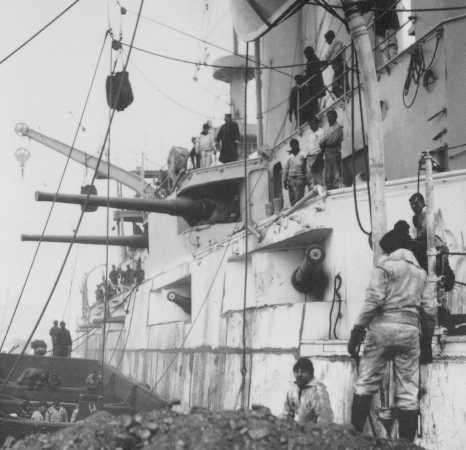Originally used on pre-dreadnoughts and armored cruisers built in the late 1800s. Also used on some auxiliary vessels during World War I. When many of these ships were scrapped after the war and as a result of the Washington Naval Limitation Treaty, the guns were then used as coastal artillery. Mounted afloat during World War II only on some older auxiliary vessels.
This gun is interesting in that, unlike most USN weapons, the nominal caliber length was actually the overall length.
This or a similar gun was also used on the Argentine battleships of the Rivadavia class.
Of built up construction and used Welin breech blocks. The Mark 8 was built entirely out of nickel steel.
| Designation | 6"/50 (15.2 cm) Marks 6 and 8 |
|---|---|
| Ship Class Used On | Maine (B-10), Virginia (B-13), St. Louis (C-20) and Pennsylvania (ACR-4) classes |
| Date Of Design | about 1898 |
| Date In Service | 1903 |
| Gun Weight | Without breech: 18,112 lbs. (8,216 kg)
With breech: 18,628 lbs. (8,450 kg) |
| Gun Length oa | 300.2 in (7.625 m) |
| Bore Length | about 294 in (7.468 m) |
| Rifling Length | N/A |
| Grooves | N/A |
| Lands | N/A |
| Twist | Increasing RH 0 to 1 in 25 at the muzzle |
| Chamber Volume | 2,084 in3 (34.15 dm3) |
| Rate Of Fire | about 6 rounds per minute |
| Type | Bag |
|---|---|
| Projectile Types and Weights | AP 1: 105 lbs. (47.7 kg)
Common Mark 20 Mods 0 to 4: 105 lbs. (47.7 kg) Anti-submarine 2: 105 lbs. (47.7 kg) Illum Mark 22 Mod 1: 95.40 lbs. (43.3 kg) Illum Mark 23 Mods 1 and 2: 96.0 lbs. (43.5 kg) |
| Bursting Charge 3 | AP: 2.4 lbs. (1.1 kg) Explosive D
Common before and during World War I: 4.0 lbs. (1.8 kg) Common Mark 20: 7.08 lbs. (3.2 kg) Explosive D Anti-submarine: about 26 lbs. (11.8 kg) |
| Projectile Length | Common Mark 20: 22.7 in (57.7 cm)
Others: N/A |
| Propellant Charge | World War I: 31 lbs. (14 kg) SPD
World War II: 38 lbs. (17.2 kg) SPD or SPDN |
| Muzzle Velocity | 2,800 fps (853 mps) |
| Working Pressure | 17.0 tons/in2 (2,680 kg/cm2) |
| Approximate Barrel Life | N/A |
| Ammunition stowage per gun | Pennsylvania and Tennessee: 200 rounds
Others: N/A |
- ^AP does not appear to have been in service during World War II.
- ^During World War I, a "flat-nose" shell was developed for use against submarines. The flat nose allowed the projectile to travel through water with reasonable accuracy. I lack other details of this projectile.
- ^Some Common rounds had a burster of 6.25 lbs. (2.8 kg).
| Elevation | Range | Angle of Fall | Time of Flight | Striking Velocity | Maximum Ordinate |
|---|---|---|---|---|---|
| 2.92 degrees | 6,000 yards (5,490 m) | 3.97 degrees | 8.14 seconds | 1,766 fps (358 mps) | 265 feet (81 m) |
| 6.26 degrees | 10,000 yards (9,140 m) | 10.40 degrees | 16.14 seconds | 1,506 fps (459 mps) | 1,061 feet (323 m) |
| 14.37 degrees | 16,000 yards (14,630 m) | 26.95 degrees | 32.31 seconds | 1,083 fps (330 mps) | 4,412 feet (1,345 m) |
| 16.03 degrees | 17,000 yards (15,545 m) | 29.95 degrees | 35.32 seconds | 1,082 fps (330 mps) | N/A |
| Range | Side Armor | Deck Armor |
|---|---|---|
| 6,000 yards (5,490 m) | 3.99" (101 mm) | --- |
| 9,000 yards (8,230 m) | 2.98" (75 mm) | --- |
| 12,000 yards (10,970 m) | 2.70" (69 mm) | --- |
This data is from "Elements of US Naval Guns" of 1918 as published in "US Naval Weapons" and is for AP shells of the World War I era. It is corrected for angle of fall.
| Designation | Single Mounts 1b Maine (16), Virginia (12), St. Louis (14) and Pennsylvania (14): Mark 10 2b |
|---|---|
| Weight | N/A |
| Elevation | -10 / +15 degrees |
| Elevation Rate | Manually operated, only |
| Train | about +100 / -100 degrees |
| Train Rate | Manually operated, only |
| Gun recoil | N/A |
| Loading angle | N/A |
- ^The ships of the Maine class were reduced to eight guns in 1909. The removed guns were then reused on auxiliary ships during World War I.
- ^The Mark 10 mounting was evaluated by Admiral Charles O'Neil, chief of the Bureau of Ordnance, as being "simple and strong, all parts are accessible, it has elevating gear on both sides and friction brakes in both the elevating and training gear, it works easily, one man being able to train and elevate with facility." However, it was apparently difficult to manufacture, with a third of the mountings being rejected by the Bureau because of faulty recoil slides.
- The hoists for these guns were electrically powered and could deliver one complete round every ten seconds to each gun.
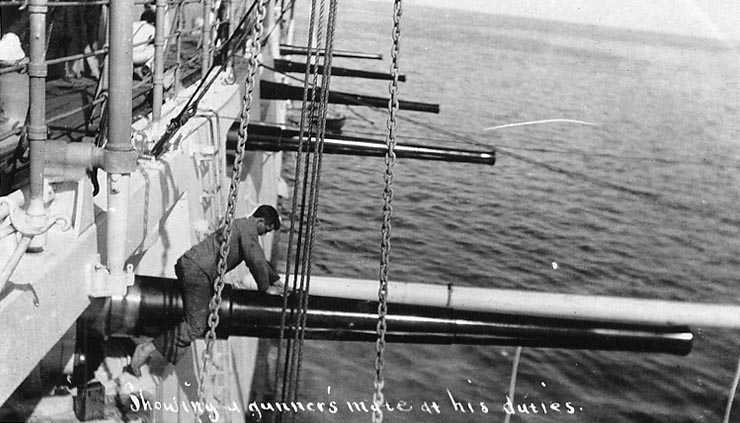
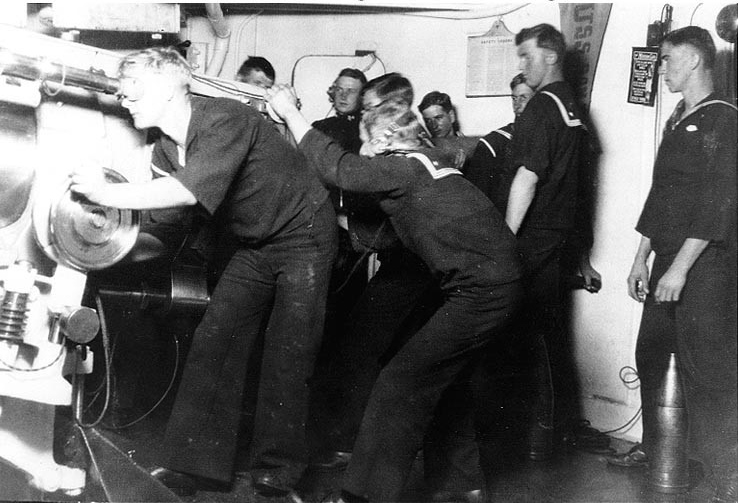
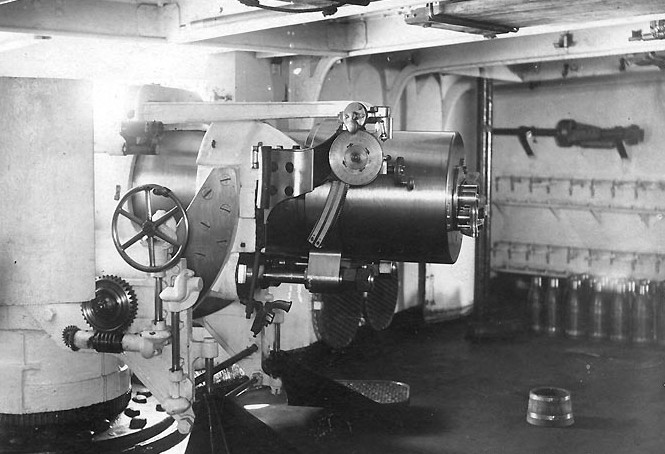
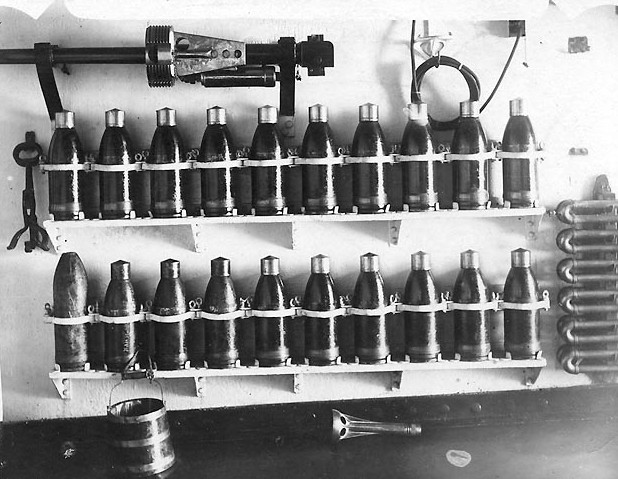
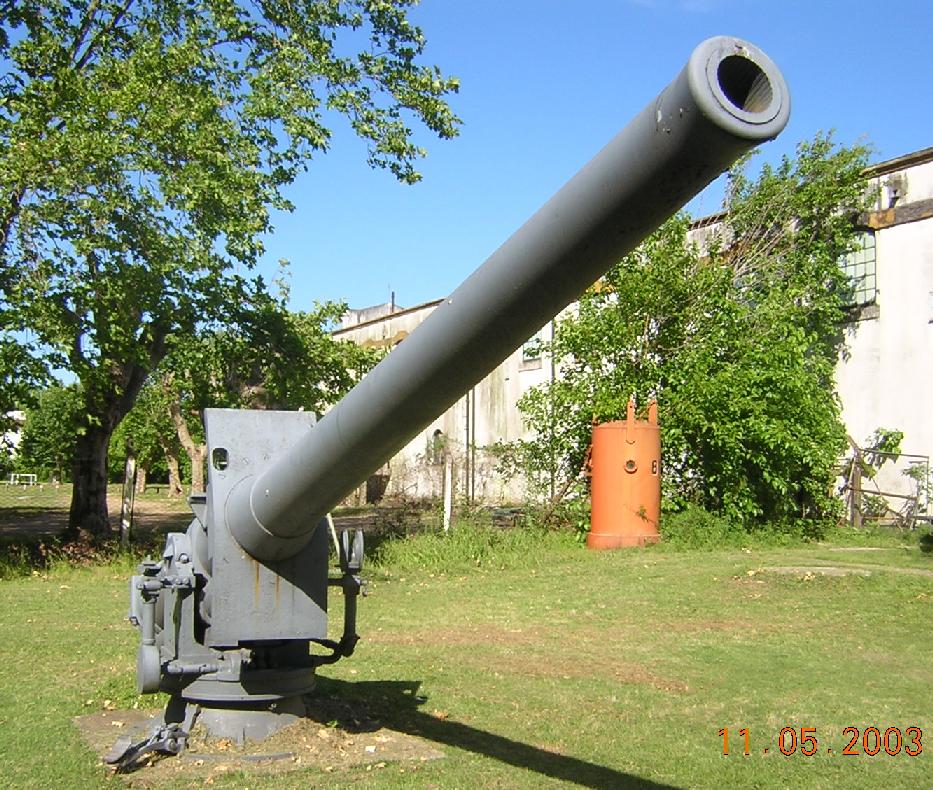
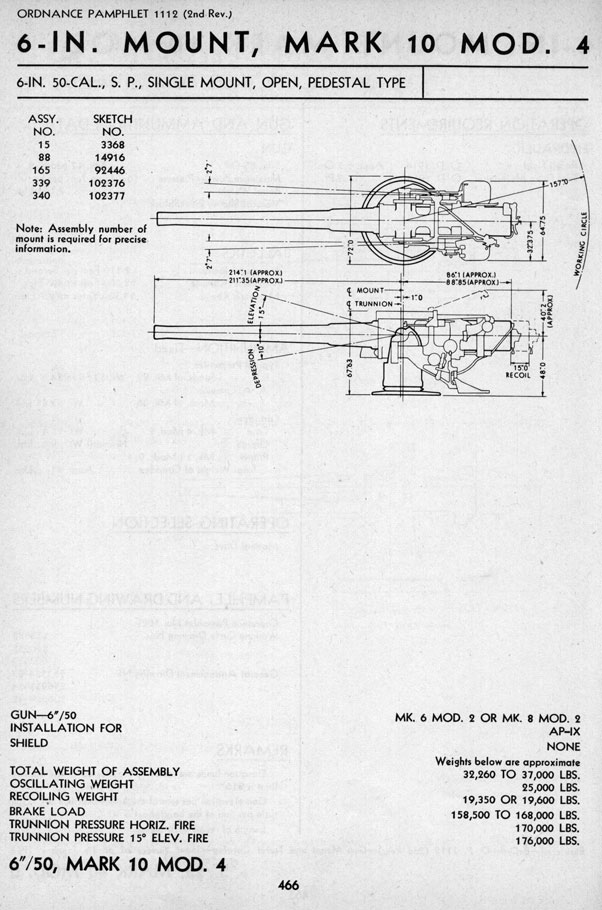
"Naval Weapons of World War Two" by John Campbell
"US Naval Weapons" and "U.S. Cruisers: An Illustrated Design History" both by Norman Friedman
"Jane's Fighting Ships 1914" by Francis E. McMurtrie
"U.S. Armored Cruisers: A Design and Operational History" by Ivan Musicant
"Battleships" by Paul Stillwell
---
"Naval Ordnance - A Text Book" revised in 1915 by Lt. Cmdr. Roland I. Curtain and Lt. Cmdr. Thomas L. Johnson
"Naval Staff Monographs - Home Waters Part VIII" Public Record Office, Reference ADM 186/629
"Abridged Range Tables for U.S. Naval Guns - Ordnance Pamphlet No. 1188 - 13 June 1944" by Bureau of Ordnance (BuOrd), Department of the Navy
"U.S. Explosive Ordnance - Ordnance Pamphlet No. 1664 - May 1947" by Bureau of Ordnance (BuOrd), Department of the Navy
---
Gene Slover's Navy Pages
---
Special help from John E. Lazauskas and Simon Schnetzke
15 August 2008 - Benchmark
13 January 2009 - Added two pictures of USS Maryland ACR-8
03 November 2011 - Fixed typographical error
02 May 2015 - Redid photograph of San Diego
11 January 2019 - Converted to HTML 5 format, reorganized notes and added mounting sketches
05 August 2023 - Revised range table
07 April 2025 - Fixed link to point at Wayback Archive

